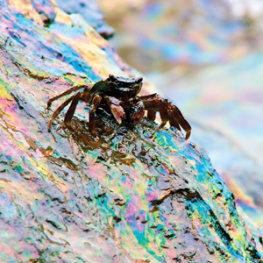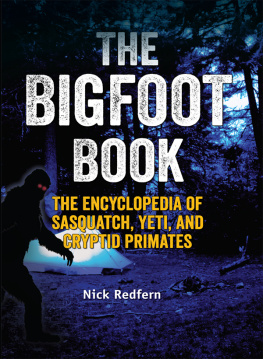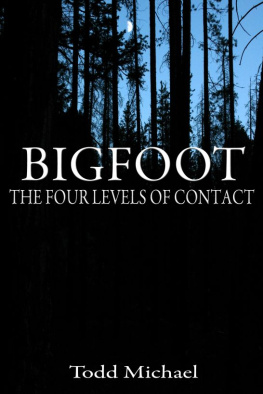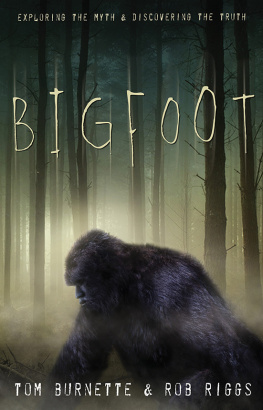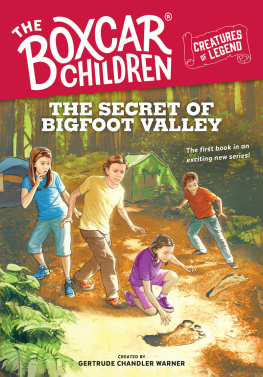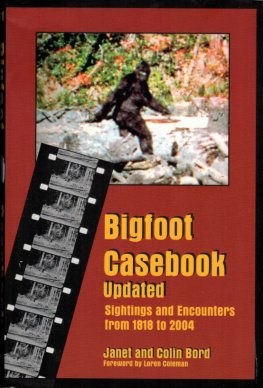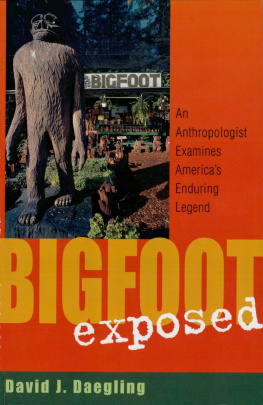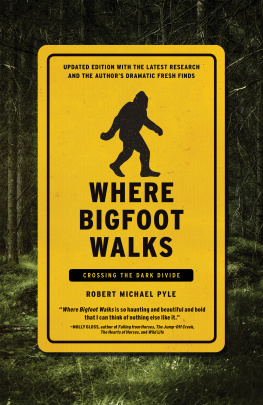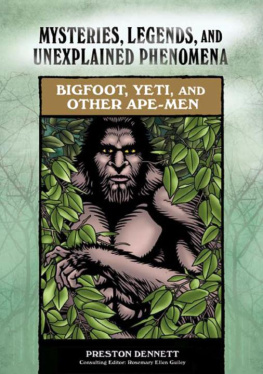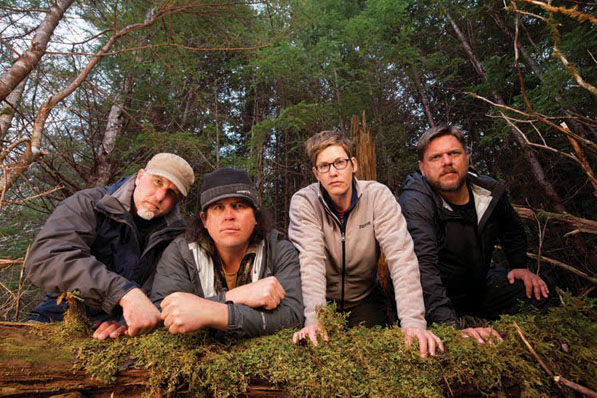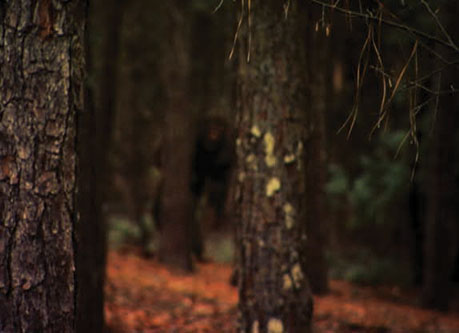FINDING BIGFOOT TM
EVERYTHING YOU NEED TO KNOW
BY ANIMAL PLANET

FEIWEL AND FRIENDS
NEW YORK
The author and publisher have provided this e-book to you for your personal use only. You may not make this e-book publicly available in any way. Copyright infringement is against the law. If you believe the copy of this e-book you are reading infringes on the authors copyright, please notify the publisher at: us.macmillanusa.com/piracy.
A Feiwel and Friends Book
An Imprint of Macmillan
FINDING BIGFOOT. Copyright 2013 by Discovery Communications, LLC. Animal Planet, Finding Bigfoot and related logos are trademarks of Discovery Communications, LLC, used under license. All rights reserved. animalplanet.com/findingbigfoot
Printed in the United States of America by R. R. Donnelley & Sons Company,
Willard, Ohio. For information, address Feiwel and Friends,
175 Fifth Avenue, New York, N.Y. 10010.
Library of Congress Cataloging-in-Publication Data Available
ISBN: 978-1-250-04089-3 (hardcover)
2 4 6 8 10 9 7 5 3 1
ISBN: 978-1-250-04090-9 (paperback)
2 4 6 8 10 9 7 5 3 1
Book design by April Ward
Feiwel and Friends logo designed by Filomena Tuosto
First Edition: 2013
mackids.com
eISBN 978-1-4668-6748-2
First eBook edition: 2014
I AM IN LOVE WITH MONSTERS. Always have been.
My first memories of bigfoot go back to when I was four or five years old. My dad, who is the best father you could ever ask for, joined something called the Indian Guides with me. We had to choose little and big Indian Guide names, and I almost went for Bigfoot. But even then, I was picky about words and didnt like how Little Bigfoot and Big Bigfoot sounded.
Ive always been interested in these animals, though. They fascinate a lot of people because of what they represent: an archetype that gives us clues about our own origins. They also represent the monster in the human condition. And as much as we like the comforts of home, a lot of us want to be able to survive in the wild as a bigfoot doesthats why all those survivor shows are so successful.
While I didnt start searching for a real sasquatch until I was older, Id always had a strong connection to the outdoors. Growing up in California, Id go camping a lot with my family, especially in Sequoia National Park. Wed go looking for animal footprints. I never thought Id see a bigfoot track, though. Back then, I thought the animal was a Pacific Northwest thing.
As I got older and started coming into my own self, I became even more drawn to weird things, as normal people bore me to tears. I like freaks and weirdos. I might look totally normal, and I have the dubious honor of being Bobo Fays most normal friend (and his parents love me because it means theres hope for their boy). But Im a pretty weird guy under it all. I was kicked out of the Boy Scouts because I didnt fall into line like I was supposed to.
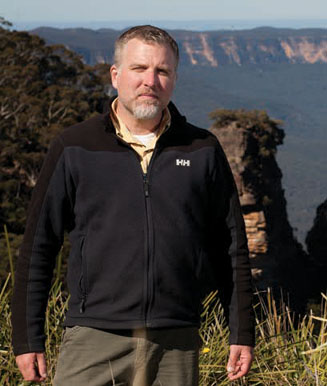
In college, I rediscovered my fascination with bigfoot when I came across a collection of papers by cultural and physical anthropologists. They talked about stone heads depicting apes found on the Columbia River. These things were 1,000 years old, long before white men first visited the continent. Whats more, there are no apes in North America. So what might these have represented? Furthermore, every Native American tribe has something like sasquatches as part of their mythology, even if they dont call them that. These animals are thrown in there with other real creatures: bears, foxes, and wolves. Thats too big of a coincidence.
I was also impressed with the way physical anthropologists analyzed the Sierra Sounds, concluding that human beings arent capable of producing noises like those. And there was Grover Krantzs convincing reconstruction of a sasquatch foot based on the tracks of a crippled specimen found in Bossburg, Washington.
I got hooked on the subject after that. I devoured every book in the library on it, and I started realizing that holy smokes, these things might be real! It wasnt so much a single piece of evidence that persuaded me, but rather, it was the consistency and internal congruency of all the data that had been gathered. People have been describing animals that look like bigfoot and act like bigfoot for centuries or more.
Bigfoot is real. But dont just take my word for it. Read this book. Consider the evidence. Look at the tracks. Its true that bigfoot doesnt yet have academic acceptance, but thats mostly a matter of ignorance, by which I mean ignoring data and evidence.
Even better, go look for bigfoot yourself. My favorite way to seek it is to sit in the woods and just listen. I calm my mind and bring a sense of awareness. Im grounded when Im out there in the woods. To search for bigfoot is to find yourself.
Im a professional teacher, and teachers are learners. My life is bigfoot now, and the only answer I have for why is that I love it. I didnt choose it. It chose me. I am in this for life.
Cliff Barackman
INTRODUCTION
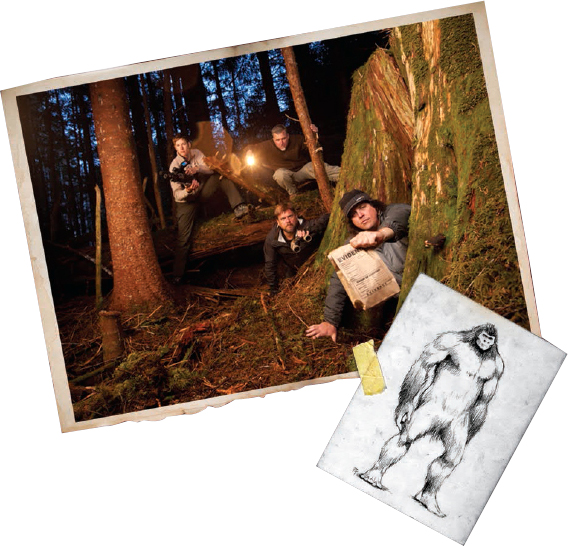
PEOPLE SAY BIGFOOT DOESNT EXIST. That sasquatch is a legend. That we can forget about finding a yeti. Its a common misperception that all of these animals have been proven to be hoaxes, that Bigfoot was just some guy playing tricks on a Northern California road crew. But those doubters dont know what the stars of Finding Bigfoot know.
They dont know about the tracks
About the noises and shining eyes in the woods at night
About the deer carcasses with strangely snapped-off bones
That long before the name bigfoot was applied to describe a creature that left giant tracks in the earth, human beings from around the world have been telling stories about an enormous, bipedal apea hairy, wild, and stunningly elusive mystery.
But thanks to Animal Planets hit documentary show, which is entering its fourth fascinating season, people are starting to find out there is real science behind the possibility of the animal best known as bigfoot.
One key to the shows success is its four intrepid stars: Bigfoot Field Research Organization president Matt Moneymaker, researchers James Bobo Fay and Cliff Barackman, and skeptical scientist Ranae Holland.
These tireless searchers have covered vast territory, ranging from the shaggy woods of the Pacific Northwest to the nearly impenetrable jungles of Indonesia, taking viewers places they can only dream of visiting. The foursome brings an incredible depth of knowledge to their pursuit. They know what these animals like to eat, where theyre most likely to be spotted, how theyre likely to behave, and what sets them apart from other animals. They also know how to sniff out phonies and false leads.




